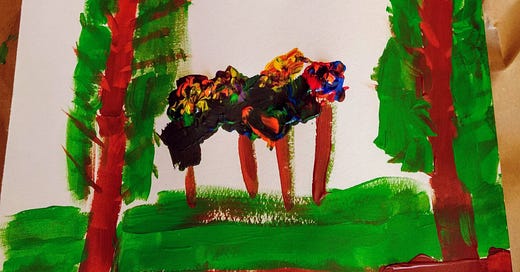In Part 1 of Questioning Obedience, I asked three questions: What do I mean by questioning obedience? Isn’t nonobedient the same as disobedient? And why is it a long term investment?
I addressed the first question in part 1. One piece to remember as you read part 2 is that obedience is generated by fear, which reduces freedom and choice.
Here is my take on the second and third questions.
I differentiate nonobedient and disobedient by the level of freedom I perceive behind each.
To me, disobedience lacks freedom. It contains the impulse to be oppositional as an unconscious strategy to gain choice and freedom. For children, this impulse is often overwhelming. They literally have less connection to their prefrontal cortex (thinking brain) than adults. I’ve experienced that same impulse so I know how powerful it is. There are ways to explain it that would be neurologically accurate and very intelligent-sounding, but I think it can be framed as a lack of internal freedom. Ironically, a lack of choice about looking for choice.
Nonobedience implies that the idea of obedience isn’t present. Sometimes when we want to describe something, it can be more effective to say what it’s not. For example the words “perfect” and “flawless”. For me, flawless is more potent. So I’m going with nonobedient.
Nonobedience implies that choice and freedom are intact. When those needs are met, the behavior that we see is more likely to be authentic, and possibly even respectful.
I want my home to be nonobedient. It isn’t, because sometimes I lose access to what I value and wish the kids would just damn well do what I say. But, really, I want my home to be free of shame, free of fear.
Fortunately, this isn’t an either/or. It’s not either punitive or shame-free. It’s a journey. I am moving myself and my family incrementally and slowly towards more and more internal freedom.
Why is it a long-term investment? I can think of four reasons. There are probably more.
One, it takes time to change. Even with the convictions that I have, I am not raising my children in a completely shame-free environment. I haven’t been programmed that way and it takes deliberate effort and specific practice to alter my perceptions, my ability to stay grounded in the moment, my responses and, literally, my neurological pathways. But hooray for neuroplasticity!
And so, I mess up. Sometimes the children lose trust in me, sometimes they gain trust. Overall, I think trust is increasing. Kind of like the stock market continues to go up over time. Or like global temperatures continue to rise, on average. But there are daily, weekly, and seasonal fluctuations. The point is, it takes time.
Two, brain wiring is ongoing and not close to complete. I can’t, for example, expect a nonobedient but consistently respectful six year old. Ain’t gonna happen. I can model, model, model (authentically) so that brain wiring happens in an atmosphere of respect and allows my kids, over time, more and more access to choosing respectful behaviors. Spoiler alert - wiring and neurological pruning not completed until early twenties.
Three, it seems that once I master my grounded presence in one phase of their childhood, they’re onto the next phase with new behaviors that challenge me, and I have to learn it all over again. Again, time.
And four, it can be so, soooo nuanced. (I’ll write a post about nuance). And therefore can invite misinterpretation, and therefore disconnection etc etc. My five year old and seven year old can have similar looking behaviors but be arriving at them from two totally different energies.
So, in summary, lots of time. That’s the long-term part. The investment part is that at the end of all this time we have, relative to a punitive paradigm, more trust, more connection, a greater sense of belonging and mattering for our children, greater access for them to choice and inner freedom. Doesn’t that seem worth it?
Where does all this leave me, today?
Here’s what I want to do:
know that I want a shame-free, nonobedient household;
know that this takes work - it’s an ongoing practice;
know that it takes time; be patient and use the tools I have to repair when I am not in alignment with my values;
know that it will evolve slowly. It won’t change today or this week or this year. But it’s a development of authentic, connected, choiceful relationships. Likely, it’s a never-ending process.
How is that for realistic goal-setting? And how did all this land?





It's clear, it's exciting, I love it - and I would like some examples to sink my teeth into - would help me remember the theory better, I think. Next post? xoxo